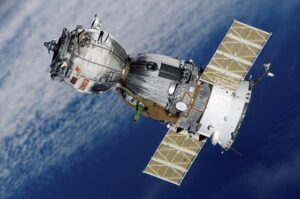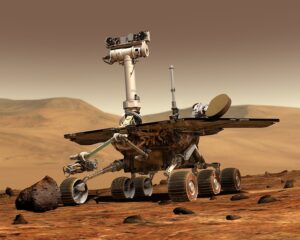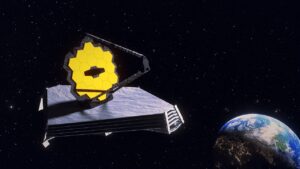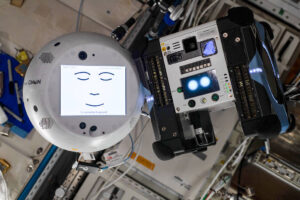For as long as humankind has discovered telescopes, the world has always tried to look beyond what is known as the sky. Looking into space today has a lot of questions sorted, especially things that are easily visible to the human eye. You know the planets, the Moon, and the stars. Most importantly, humanity plans to settle on nearby planets. Even though that’s tricky, they consider Mars the most favorable. However, what has become the main attraction is that you now have AI And Space. Artificial Intelligence is helping with discoveries in space.
Yes! You have read it right. Artificial Intelligence today plays a major role in helping humans continue their space investigations. It looks after everything from helping with data analysis and galaxy mapping to predictive maintenance. You have NASA, where the greatest researchers and developers try to advance by combining AI and space objectivities. For a long time, NASA scientists have been taking cues from the stalwarts in ML (Machine Learning) part of AI (Artificial intelligence) technology to use those in exploring space. Besides AI locating autonomous stars, you have AI-based technical tools for complete image analysis of planets and galaxies. Also, AI-based distortion-free cognitive radios by NASA help with seamless communication with Earth. Moving on, let’s look into all the successful AI implementations by NASA.
AI And Space Radio Of NASA

As a futuristic upgrade to NASA’s space crafts, the organization introduced AI-based cognitive radios, replacing human-controlled radio systems. This radio technology can adapt to new electromagnetic landscapes without human help. Also, it is able to predict operational settings for different environments in space. The best part about AI here is that the system can allocate downlinks to the ground station, taking just a few hours. Which earlier used to take weeks.
NASA’s Self-Driving Perseverance Mars Rover

Next in line is NASA’s self-driving perseverance Mars rover with its exclusive AutoNav technology, primarily based on Machine Learning. Machine Learning is uniquely identified as a branch of Artificial Intelligence that utilizes available algorithms and data to behave like humans. Moving on into AI and space and everything you have with the Rover. It can think and drive at the same time. As per records, such a capability helps the rover to move around Mars at a speed of 393 feet per hour. The Perseverance Mars rover is currently completing its trekking across the Jezero Crater of Mars.
The James Webb Space Telescope And AI

The James Webb Space Telescope, launched in 2021, with its 21 feet primary mirror, stands as the largest telescope launched in outer space. Scientists from NASA depend on AI to analyze the information generated by JWST. The particular uses Morpheus Machine Learning Model to detect and segregate galaxies present in outer space. Thus enabling humans to map the earliest structures present in the Universe. The Morpheus model is based on a convolutional neural network that can annotate every other pixel of high-resolution images captured by the JWST.
Mission CIMON

The CIMON (Crew Interactive Mobile Companion) robots are free-floating members from separate countries. They come with a single mission, to help astronauts with their activities at the International Space Station. Built on IBM-based Watson AI technology, the CIMON robot trio (Bumble, Honey, and Queen) comes as cube-shaped robots that can be operated from the ground. The tasks include managing inventory or controlling the environment in the space station. Besides this, as the first AI robot into space, the trio is also used as a handy database, camera, and computer support, which does help with the research.
The future seems quite bright, and only time will reveal what more can humankind come up with fulfilling their mission of launching AI into space.



